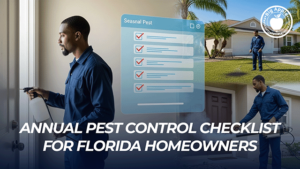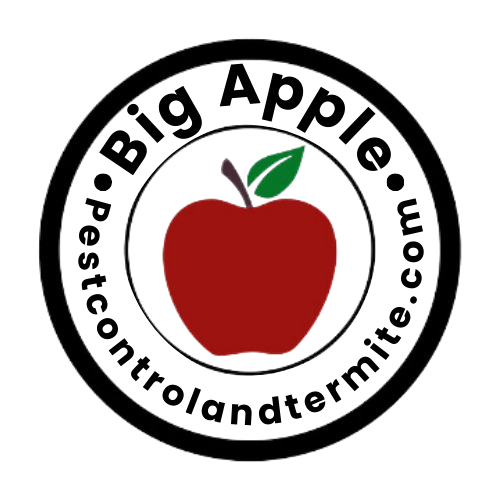Homeowners who spot pest indicators need to determine if professional pest inspections provide value for their time. The answer? Absolutely. Professional pest inspections should be performed because pests such as termites, rodents, and cockroaches can cause significant harm, resulting in severe health problems for inhabitants. A professional pest inspection takes you through all pest-related issues to develop an exact strategy for their management.
What Happens During a Professional Pest Inspection? Step-by-Step Guide
A pest examination follows a step-by-step process that entails various activities. What happens during a professional pest inspection? Step-by-step guide. The following guide provides comprehensive instructions about professional pest inspection, along with associated detection methods and preparation techniques.

Why Professional Pest Inspections Are Essential
General pest inspections go further than superficial visual assessments of property structures. The equipment and expertise that experts possess enable them to identify subtle signs of infestation at early stages before the issue worsens. Although homeowners can try to inspect their properties themselves, they typically overlook small yet significant signs of trouble, such as concealed wall damage or invisible pest excrement.
Peace of mind accompanies the service that professional pest inspectors deliver to customers. When you recognize potential issues during house buying or house protection, it helps you save money and reduces stress in the future. Hiring a professional inspector will save you from minor problems escalating into major and costly issues.
Step 1: Initial Consultation and Property Assessment
You start pest inspections by reaching out to professional pest control companies to arrange their inspection service. You will present all your observed concerns when you initiate your first phone contact with the pest expert. Sound evidence of nighttime wall scratchings or ant tracks in your kitchen area indicates one such reason to seek an inspection. Special attention areas become more apparent to the inspector through the provided information.
The inspection begins with a walk-through of your premises. The assessment enables the inspector to evaluate the structure and positioning of your house in relation to its surroundings. Problem-prone areas, including basements and attics, as well as kitchens, are where inspectors focus their observations. The start-up phase determines how future action sequences will unfold, and it applies to both fresh inspections of new properties and reviews of established sites.
Step 2: Detailed Exterior Inspection
The inspection process begins with an examination of the external areas of your house. Why? The environment outside homes serves as a primary pathway for pests attempting to enter. The inspector evaluates the home’s foundation to check for cracks or crevices, as these spaces can serve as entry points for ants, termites, and rodents. The inspection team evaluates areas that hold water, as these spots attract mosquitoes and various other insects.
The examination evaluates near-home firewood piles and trees, as well as shrubs, because they serve as pest connection points. In addition to rooflines and gutters, the inspector selects them both for essential inspections. The inspection process identifies any signs resulting from pest infestations, such as squirrel or bird damage, together with evidence of nesting sites or droppings.
Step 3: Thorough Interior Examination
The inspector will proceed inside your property for an interior assessment after finishing the external evaluation. When searching for concealed indications of infestation, this section carries the highest importance. During the examination, the inspector will analyze pest droppings, combined with gnaw marks and grease trails, to identify the presence of rodents alongside signs of termite or carpenter ant wood deterioration.
The areas of the kitchen, bathrooms, and basements receive priority during inspections because pests are naturally attracted to food sources and moisture. The inspectors will examine every possible nook and cranny with great attention to prevent any potential hiding place for pests. The inspector will examine every part of your attic to confirm that pests do not have openings in your insulation material.
Step 4: Identification of Pests and Damage
The identification of pests is a crucial characteristic that professionals perform during their property inspections. The ability of pest inspectors to classify different pest species enables them to select the most suitable treatment method. The solution for rodent destruction differs entirely from that needed for termite destruction, even when these damages appear similar to experts.
The inspectors actively search for evidence related to pest infestations, in addition to primary indicators. Termite infestations reveal their presence through both weakened building materials and an unusual hollow sound in floors. Included evidence of rodent infestation is both wire destruction and urine markings on surfaces. Proper identification of pests and damage is a basic requirement for delivering successful problem elimination.
Step 5: Use of Specialized Tools and Techniques
The inspection process requires specialized tools for search enhancement, together with detailed examination of all concealed areas. Thermal imaging cameras enable pest control specialists to detect rodents hiding in walls because these cameras detect warm-bodied creatures. Moisture meters play a crucial role in identifying moist regions where pests produce their offspring, especially for termites and mold-related pests.
The trained inspectors use probes to gently strike the wooden elements of the building, listening for signs of termite-inflicted hollow areas during their audit process. If they need to identify the specific type of pest issue, proper bait stations or traps are used. The detailed evaluation requires professional expertise because it exceeds what laypersons can manage independently, which underscores the value of professional pest examinations.
Step 6: Documentation and Reporting
The inspector creates a comprehensive report that summarizes the inspection results after the process is complete. The analysis includes a description of pest types, along with measurements of infestation levels and inspections of structural elements that may have facilitated the problem. Visual evidence includes pictures of damaged space, together with evidence of infestations that the inspector takes before presenting the report to you.
The evaluation results will additionally contain recommended actions for moving forward. The provided report suggests fumigation or baiting, as well as structural repairs and addressing moisture problems. The plan provides clear instructions that outline all the necessary steps to resolve the problem effectively.
Step 7: Follow-Up and Treatment Recommendations
Pest control companies often provide additional services during follow-ups as part of their inspection offerings. The inspector returns to your property after the treatment application to verify that pest elimination is complete. The inspector will recommend both preventive strategies to prevent future problems, alongside specific recommendations regarding sealing openings or improving ventilation in your house.
Follow-up inspections provide the most crucial benefit for buildings that experience persistent pest infestations. The services perform multiple tasks by confirming ongoing control of infestations and detecting any remaining problems. The ongoing support provided through professional pest inspections enhances the value of your investment for an extended period.
Conclusion
Performing professional pest inspections delivers value beyond identifying pests, as they serve as crucial protection measures for your property, while also maintaining the health of residential occupants. Identifying issues quickly helps you avoid future expenses related to both pest damage and health problems, which can lead to reduced comfort. Homeowners and managers of commercial properties gain invaluable insights from the expertise they acquire during professional pest inspections.
If you experience worry about pests entering your house, then you should get help soon. You should contact a licensed pest control company immediately to schedule a suitable inspection date. A pest inspection serves as the essential starting point for creating both pest-free spaces and stress-free environments.







